Session 2
| Site: | MoodleHUB.ca 🍁 |
| Course: | Early Learning and Child Care 30 Modules |
| Book: | Session 2 |
| Printed by: | Guest user |
| Date: | Thursday, 18 December 2025, 10:34 AM |
Description
Created by IMSreader
1. Session 2
Session 2: Creative Development
Introduction

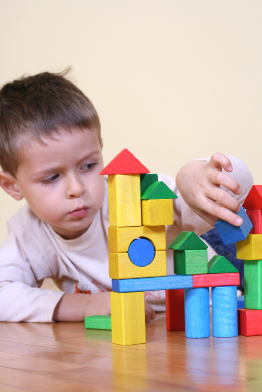
© matka_Wariatka/1490544/Fotolia
Have you ever wondered why some children build elaborate forts in the block area, while others build stacks only two or three blocks high? What else can children do in the art area besides draw with crayons? Maybe you’ve wondered what to ask children so they will answer your questions with more than a yes or no.
This session examines the importance of creativity as it relates to the development of the whole child. Emphasis in this session is placed on the role of a child care provider in providing an environment that encourages all stages of creative development in children.
1.1. Get Focused
Session 2: Creative Development
Getting Focused Activity: Children’s Creative Development
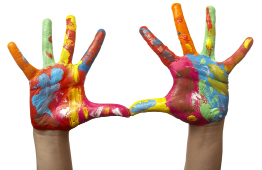
© picsfive/14011795/Fotolia
Focus
Exploring the practices of child care providers and environments will help you learn about supporting creative development in children.
Directions
Step 1: Search the Internet for the poem “The Little Boy,” by Helen E. Buckley. Read the poem.
Step 2: Complete Getting Focused Activity: Children’s Creative Development.
 Checking In
Checking In
Save the Getting Focused Activity in your course folder.
1.2. Inquiry 1
Session 2: Creative Development
Inquiry 1: What Is Creativity?
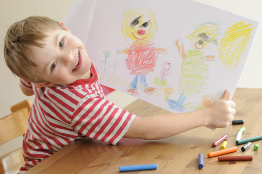
© Erna Vader/iStockphoto
Watching children find delight and wonder in the world is one of the most rewarding things about working with children. What most adults consider to be ordinary, children look at in wonder and amazement. Child care providers who understand creative development will engage children and foster their sense of creativity.
Creativity is difficult to define. It is demonstrated when individuals are curious, flexible, and interested in exploring their environment. (All children have these traits.)
People using their creativity exhibit the following characteristics:
-
They think in different ways.
-
They are flexible and adapt to change.
-
They are sensitive.
-
They have a heightened awareness of the world.
-
They experience through their senses what others may miss.
-
They have a sense of wonder and enjoyment for beauty.
Creativity is taking a different or fresh approach developed from one’s own thoughts or imagination. Creativity involves a process of creating (e.g., choosing items, materials, ideas, and words to express oneself) and an end product (i.e., what is created).
For young children, the process of creating is very important. Often, their focus is on how they play with and manipulate materials. The result or end product of their creating may have little meaning to them. Sometimes there is no end product at all. There are many examples of activities that support children’s creative development but have no end product. Consider the following examples:
-
trying out diverse objects as instruments for making music
open-ended experience: an experience that allows children to choose which materials they want to use from those available, how they want to use them, and whether or not there will be an end product
Open-ended experiences do not need to include the possibility of an end product.closed-ended experience: an experience in which children are told which materials to use and how to use them
In a closed-ended experience, the end product is defined for the children. - thinking up actions to go with a song
- playing with an object in a new way
- while indoors, imagining an outdoor space in which to play camping
- telling a story to go with a picture
To develop creatively, children need opportunities to engage in open-ended experiences rather than in closed-ended experiences.
Creative Versus Factual Response
It is recommended that you ask children questions that encourage them to give a creative response. For example, a child care provider asks a child, “Why is your baby crying?” The child’s creative response might be, “She hurt her toe. A lion bit her.”
Questions that are based on facts and are either right or wrong do not develop children’s creativity. For example, “The grass is green” is a factual response to the question, “What colour is the grass?” The question does not require the child to think creatively.
While factual questions don’t require children to think creatively, they are appropriate when child care providers want to find out what a child knows. There is a place for both types of questions in a child care environment.
Checking My Understanding: Questions That Encourage Creativity
Focus
Child care providers can promote children’s creativity by asking specific types of questions. Factual questions focus more on children’s intellectual development, whereas creative questions promote creative thinking.
Directions
Complete the Questions That Encourage Creativity activity.
Stages of Creative Development
Consider the following stages of creative development.
|
Stage |
Basic Exploration |
Non-Representative |
Representative |
|
Description |
Children explore and manipulate materials by using their senses. |
Children continue to gain an understanding of materials and are able to use them with more control. |
Children pre-plan how to use materials and create something recognizable. |
|
Examples |
|
|
|
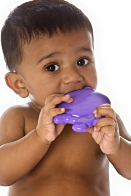
© Lichtmeister/22001883/Fotolia
When children are introduced to new materials, they may begin at the basic exploration stage. For example, toddlers may put toys in their mouths as part of basic exploration. Child care providers should understand that this is the basic exploration stage and matches the stage of intellectual development.
 Course Project
Course Project
As you progress through this session, it is important to remember that you should also be working on items and strategies to include in your strategies box. How might you apply the information presented in this inquiry to items and strategies for your course project?
Course Completion Checklist
Have you remembered to update your Course Completion Checklist? If you haven’t already started to use the checklist, access it in the Toolkit now. Remember to update the checklist every time you work on the course.
1.3. Learning Activity 1
Session 2: Creative Development
Learning Activity 1: Knowing the Creative Stages of Play
As in other areas of development, children progress through stages of creative development, providing they have access to a variety of materials. It is important for child care providers to understand where children are developmentally so that they are able to provide an environment rich in open-ended, age-appropriate experiences that encourage creative development.
Directions
Step 1: Complete Learning Activity 1: Knowing the Creative Stages of Play.
Step 2: Review the Student Rubric for Learning Activity 1: Knowing the Creative Stages of Play. Assess your work and make any necessary adjustments.
 Checking In
Checking In
Save your completed learning activity and your self-assessment in your course folder.
Interested in Learning More?
To learn more about the general stages of creative development, you may wish to ask a colleague in the child care facility the following questions:
-
Why is it important to support children’s creative development?
-
What are some practices and/or comments that could encourage children to use materials creatively?
-
What are some practices and/or comments that might discourage children from using materials creatively?
1.4. Inquiry 2
Session 2: Creative Development
Inquiry 2: Environments That Promote Play
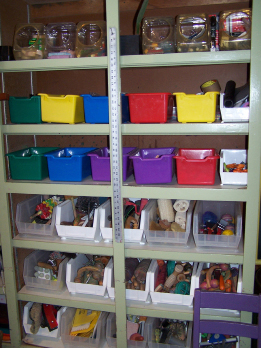
© 2009 Sherry Duncan, Keyano College
To encourage creative development, the environment must allow children to exercise and use their creative abilities. While there may not always be a recognizable end product to show parents at the end of each day, the children will be developing their own ways of expressing themselves that reflect their personal thoughts and feelings. The ability to engage in the creative process also has a positive influence on all other areas of development (social, emotional, physical, intellectual, and language). Always remember that the process is more important than the end product.
Environments that promote creativity have the following features:
- They provide children access to a large variety of materials appropriate to the child’s age.
- They give children lots of time to experiment with a variety of materials (e.g., water, sand, paint) so that they have a chance to explore materials in depth and progress through the stages of creative development.
- They have clearly organized areas so children know where they can engage in different types of creative activities.
- They provide plenty of open space so that children are not interfered with or disrupted and can move easily from one activity to another.
- They provide well-organized, labelled materials that are easily visible and attractively displayed on shelves that are accessible to the children. Children have the freedom to choose their own materials.
- They display children’s work.
1.5. Learning Activity 2
Session 2: Creative Development
Learning Activity 2: Materials and Activities That Support Children’s Creative Development
Focus

© Jaimie Duplass/24209521/Fotolia
Using the materials found in a dramatic interest centre to dress up as different characters supports children’s creative development.
Whenever child care providers are going to add to or change the materials provided for the children, they need to ask themselves the following questions:
- Is change going to benefit the children’s play?
- Is the new material safe and easily supervised?
- Is the new material developmentally appropriate for the ages of the children in my care?
Once the materials have been added, the child care provider can encourage children’s play by
- introducing vocabulary
- encouraging children to role play
- asking open-ended questions to extend learning
- becoming a play partner while ensuring the play is directed by the child
- observing and participating in play
Directions
Step 1: Review Unsafe Materials and Their Safe Alternatives.
Step 2: Complete Learning Activity 2: Materials and Activities That Support Children’s Creative Development.
Step 3: Review the Student Rubric for Learning Activity 2: Materials and Activities That Support Children’s Creative Development. Assess the quality of your responses and make any necessary adjustments.
 Checking In
Checking In
Save the completed learning activity and your self-assessment in your course folder.
Course Completion Checklist
Have you been keeping your Course Completion Checklist up to date?
1.6. Inquiry 3
Session 2: Creative Development
Inquiry 3: The Role of the Child Care Providers in Children’s Creative Development
The process of creating, rather than the end product, is the most important part of young children’s creative experiences. Follow the practices listed below to help keep the focus on the process of creating:
- Provide children with a variety of materials that allow for self-expression. For example, provide various kinds of writing materials (e.g., markers and crayons), props such as dress-up clothes, or large empty boxes.
- Provide a variety of play materials but not so many that the children feel overwhelmed.
- Plan long periods of uninterrupted playtime so that the children can explore materials and use them in new and inventive ways.
- Provide open-ended experiences in which children select the materials they wish to use, and allow the children to decide how to safely use the materials.
- Ask children open-ended questions that require imaginative and unique responses. Questions should have many possible answers. For example, rather than asking, “What did you make?” say, “Could you tell me about your picture?”
1.7. Learning Activity 3
Session 2: Creative Development
Learning Activity 3: Supporting Creative Development
Focus
It is important that child care givers understand the process of creating. As teenagers and adults, it is very easy to become more driven by the end product than by the process of creating. In Part A you will focus on how child care providers can enhance children’s creativity by providing open-ended experiences. In Part B you will have the opportunity to engage in the process of creating. Enjoy!
Directions
Step 1: Read Scenarios 1, 2, and 3.
Step 2: Choose one scenario. Complete Part 1 of Learning Activity 3: Supporting Creative Development.
Step 3: Read the recipes for creating the following substances:
Step 4: Make two of the recipes.
Step 5: One at a time, play creatively with each substance.
Step 6: Complete Part 2 of Learning Activity 3: Supporting Creative Development.
Step 7: Review Student Rubric for Learning Activity 3: Supporting Creative Development. Assess your work and make any necessary adjustments.
 Checking In
Checking In
Save your completed learning activity and your self-assessment in your course folder.
 Course Project
Course Project
Could you apply materials and ideas developed in this learning activity to items and strategies for your strategies box?
1.8. Learning Activity 4
Session 2: Creative Development
Learning Activity 4: Promoting Creativity Through Music
Focus
Children increase their ability to use their imaginations, listen, and observe by participating in music, art, and stories.
The use of music as a channel for children’s emotions is one of the most important areas of creative development.
Directions
Step 1: Using the Internet, the library, or the advice of parents and colleagues, research action songs that would be appropriate for teaching to children in the child care facility. The following are some examples you might find in your research:
- “Five Little Monkeys”
- “One Green and Speckled Frog”
- “The Ants Go Marching”
- “One Green Jellybean”
- “Peanut Butter and Jelly”
- “Head and Shoulders, Knees and Toes”
- “The Elephant Song” (often referred to as “Skinnamarink”)
Step 2: Choose one song and practise it until you can sing the song and do the actions with ease.
Step 3: Teach the song (including actions) to a child or small group of children in the child care facility. As you teach the action song, answer the following questions:
- How is this activity promoting creative development?
- Which of the questions you asked promote creativity? How did it encourage the child or children to give creative responses or how did it contribute to creative development?
1.9. Session 2 Summary
Session 2: Creative Development
Session Summary
Review Session 2 to prepare for writing the quiz. As you review, note the sections that connect with the following points:
Important: The quiz may contain questions beyond points highlighted in this summary. Be sure to review the session thoroughly.
- Creativity is taking a different or fresh approach developed from one’s own thoughts or imagination.
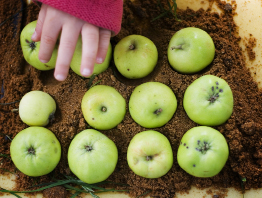
© Alex Motrenko/1304377/Fotolia
- For young children, the process of creating is very important. The end product may have little meaning.
- An open-ended experience is an experience that allows the child to choose the materials and decide how to manipulate and explore them.
- A closed-ended experience is an experience in which the child is told what materials to use and how to use them.
- Child care providers have to ensure that the process of creating is the most important part of the young child’s creative experience.
- There are three general stages of creative development: basic exploration, non-representative, and representative.
- Child care providers should provide children with a variety of play materials that allow self-expression.
- Child care providers’ central role in creative development is to plan activities that are developmentally appropriate and interesting to the child. They should supply a variety of experiences and support children’s creative thinking.
Session Quiz
 Checking In
Checking In
Contact your teacher to decide together when and where you will complete the Session 2 Quiz.